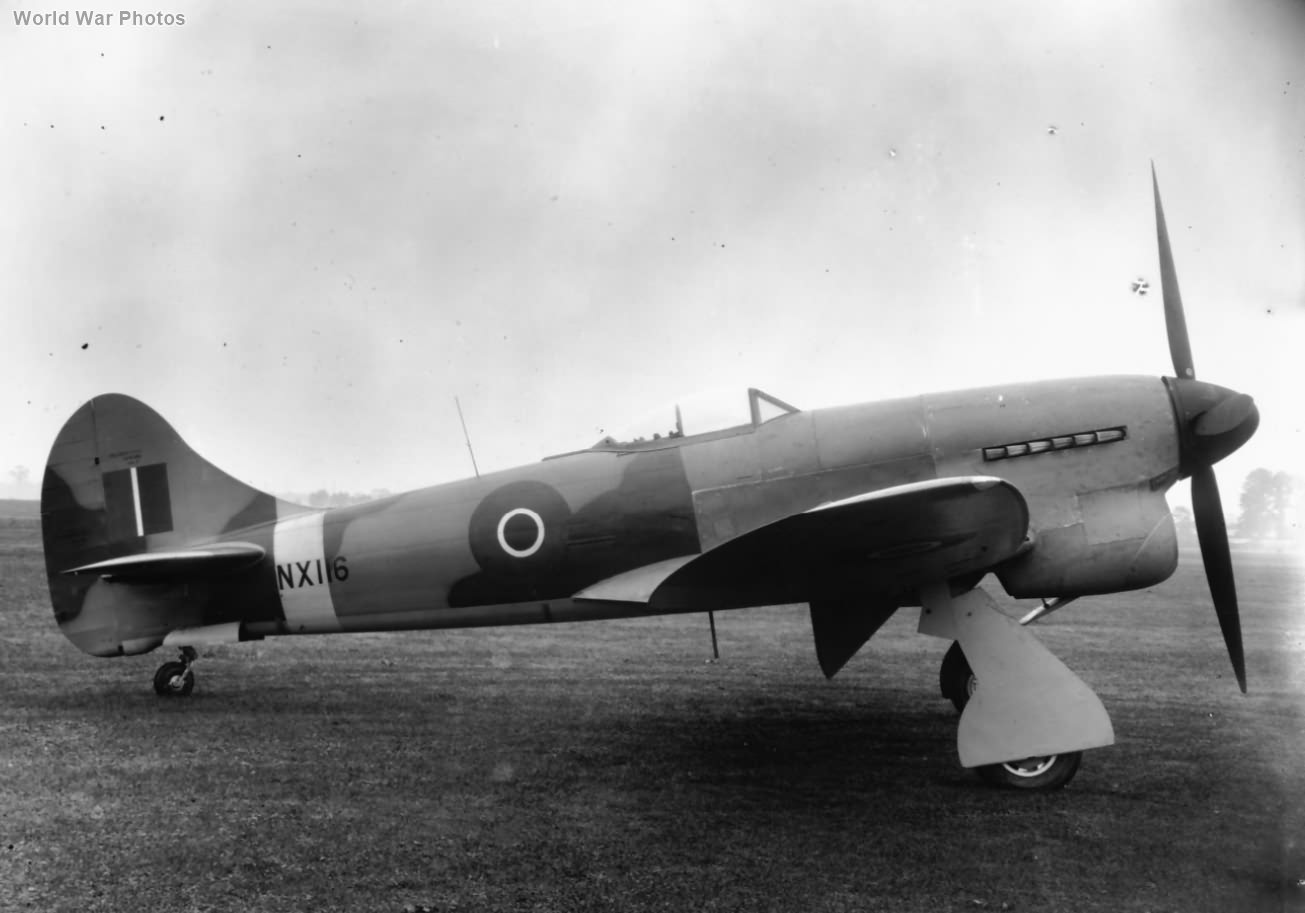The Tempest Mk VI was initially regarded as an interim measure, with the Tempest Mk II being seen as the ultimate variant, but continued development led to the Mk VI becoming a significant operational type. Its development stemmed from the partially successful Sabre IV-engined Tempest I, with the decision made to fit a Napier Sabre V engine as a trial installation in the prototype Tempest V, HM595. This aircraft, flying on 9 May 1944, was subsequently designated the Tempest VI.
The new Sabre V engine, rated at 2340 hp, necessitated several modifications for increased cooling capacity. The radiator frontal area was enlarged to occupy the entire cross-section of the radiator fairing. The oil cooler was relocated from the center of the radiator to a position behind it, and the carburettor air intakes were repositioned to the leading edges of the inner wings. A subsidiary oil cooler was also fitted in the leading edge of the starboard wing root, similar to the Tempest Mk II. Like later Tempest Vs, the Mk VI was equipped with patented Hawker spring tabs.
Designed specifically for service in the Middle East, the Tempest Mk VI incorporated tropical clearance trials conducted at Khartoum in December 1944. It was equipped with a desert survival kit, which included two water cylinders mounted in the fuselage behind the pilot’s head armour. An air cleaner system was installed beneath the fuselage, between the wings, for use during ground running and taxiing in dusty conditions. After takeoff, air for the carburettor automatically transferred from the filter system to the leading edge intakes, with a manual override available in the cockpit.
Initial production orders for the Tempest VI were for 306 aircraft, a contract originally intended for Tempest I production, but this was reduced to 250, and eventually cut to 142 aircraft. The first production aircraft were delivered in July 1945, with Hawker and Napier retaining the first seven for trials. Full performance and cooling trials for the Mk VI (NX119) were conducted at Khartoum between December 1945 and February 1946.
In terms of performance, the Tempest Mk VI achieved a maximum speed of 438 mph at 17,800 ft. It could climb to 15,000 ft in 4 minutes and 40 seconds, and had a service ceiling of 38,000 ft. Its normal range was 750 miles.
The primary armament of the Tempest Mk VI was four 20 mm Hispano cannons. It was cleared to carry 250 lb, 500 lb, and 1000 lb bombs, or up to eight Rocket Projectiles (RPs). Notably, unlike other Tempest marks, the Mk VI was fitted with Mk VIII RP (zero-length) launchers. It could also carry two 45-gallon or 90-gallon drop tanks under the wings for extended range. Provision was later made to carry Napalm, Smoke, or Oil bombs. Pilots noted its stability as a rocket-firing aircraft and its accuracy, with one commander stating an experienced pilot could hit a tank on the ranges with one out of every two RPs fired. This improved accuracy contrasted with wartime RP Typhoon squadrons, which had an average error of about 30 yards, while Tempest Mk VIs could achieve an average error of six yards.
The Tempest VI did not see combat during World War II. After the war, it replaced Spitfire, Mustang, Mosquito, and Hurricane variants in Middle East squadrons. Units that received the Mk VI included No. 249 Sqn at Habbaniya (Iraq), No. 6 Sqn at Nicosia (Cyprus), No. 213 Sqn also at Nicosia, and No. 8 Sqn in Aden. Pilots noted that the Tempest VIs cruised about 70 mph faster than the Mustang IVs they replaced. However, they were also “plagued by oil leaks and generally demanded a lot more maintenance” than the Mustangs.
Tempest F Mk VI NX116
Published at 1305 × 913 px.
Link to full-size photo:
Tempest F Mk VI NX116
Site statistics:
Photos of World War II: over 26800
aircraft: 63 models
tanks: 59 models
vehicles: 59 models
guns: 3 models
units: 2
ships: 47
WW2 battlefields - 12
weapon models: -
equipment: -
